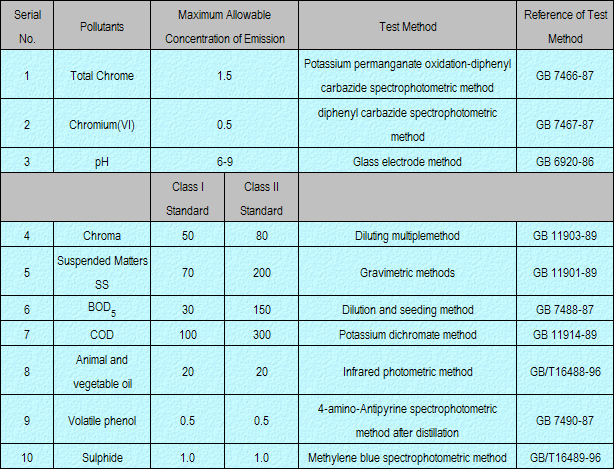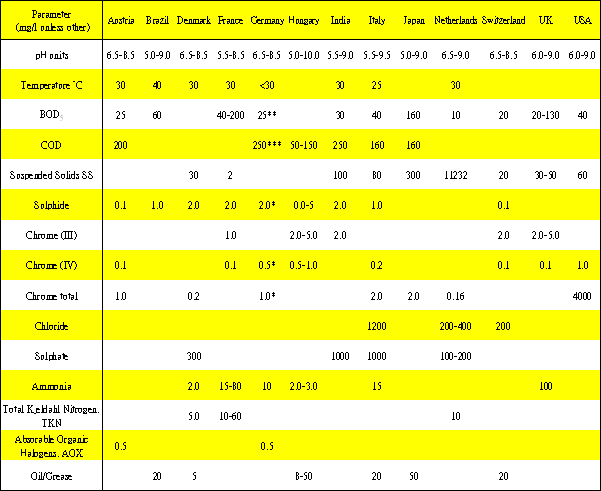Government Regulations and Commercial Production Requirements on Discharge Level of Pollutants from Leather Production
- Regulationof Discharge of Pollution Load from Leather Production in China
- Discharge Standards for Tannery Waste Waters for Several Countries
- OEKO - Standard
- German SG Mark
- ICT Eco - Toxicity Guidelines
- Regulation / Requirement and Test Methods for Restriced Substances
- Determination of the Performances of Car Seat Leater
- Methods for Determining the Amount of Hazardous Substances in Leather Product
The environmental impacts from tanneries originate from liquid, solid and gaseous waste streams and they arise from the consumption of raw materials such as raw hides, energy, chemicals and water. Furthermore, the nature of some of the processes and the materials consumed in those processes may potentially have an impact on health and safety at work, and possibly on soil and groundwater contamination.
The followings are some of the government regulatory and commercial requirements of pollution loads in leather production. (Please refer to the menu for details.)
Regulation of Discharge of Pollution Load from Leather Production in China
Maximum Allowable Concentration of Pollutants to be Discharged from Leather Production
GB 8978-1996 (Unit: mg/L)

Discharge Standards for Tannery Waste Waters for Several Countries
Comparison of Discharge Standards for Tannery Waste Waters for Several Countries
(Source: Tanneries and the Environment: A Technical Guide to Reducing the Environmental Impact of Tannery Operations, United Nations Environment Programme, 1991)

Remarks:
* in separate effluent, before mixing with effluent from other processes in the tannery. In case of combined treatment the limit is lower according to the mixing rate
** 25 or reduction by 97.5%
*** 250 or reduction by at least 90%
OEKO - Standard
(Please refer to the table in the menu.)
German SG Mark
(Please refer to the table in the menu.)
ICT Eco – Toxicity Guidelines
(Please refer to the table in the menu.)
Regulation / Requirement and Test Methods
for Restricted Substances
(Please refer to the table in the menu.)
Methods for Determining the Amount of
Hazardous Substances in Leather Product
Formaldehyde, azo dyes, pentachlorophenol and chrome VI are known as noxious and deleterious carcinogenic, not only seriously polluting the environment, but also impairing the human health. At present, European Union, Japan and especially Germany have applied a strict control upon leather imported from abroad containing noxious and deleterious substances. The United States is formulating a relative regulations and China also imposes strict limit upon leather and its products exported to these regions and countries……
Determination of the Performances of Car Seat Leather
Car seat is one of the main leading products in the global markets with promising market prospect. Leather used for car seats shall undergo more rigorous testing than leathers with other purposes, not only there are more varieties and number of testing, but also the requirements for testing are higher. It is revealed from survey that international organisations or countries concerned have not set forth the common standards and testing methods of car seat leathers. All standards for car seat leather are filed by all carmakers.
The test methods used for testing the performances of leather for car seats adopt the standard test methods stipulated by IUP and IUF under IULTCS. Some individual items adopt the standards stipulated by American Society for Testing and Material (ASTM).
|
